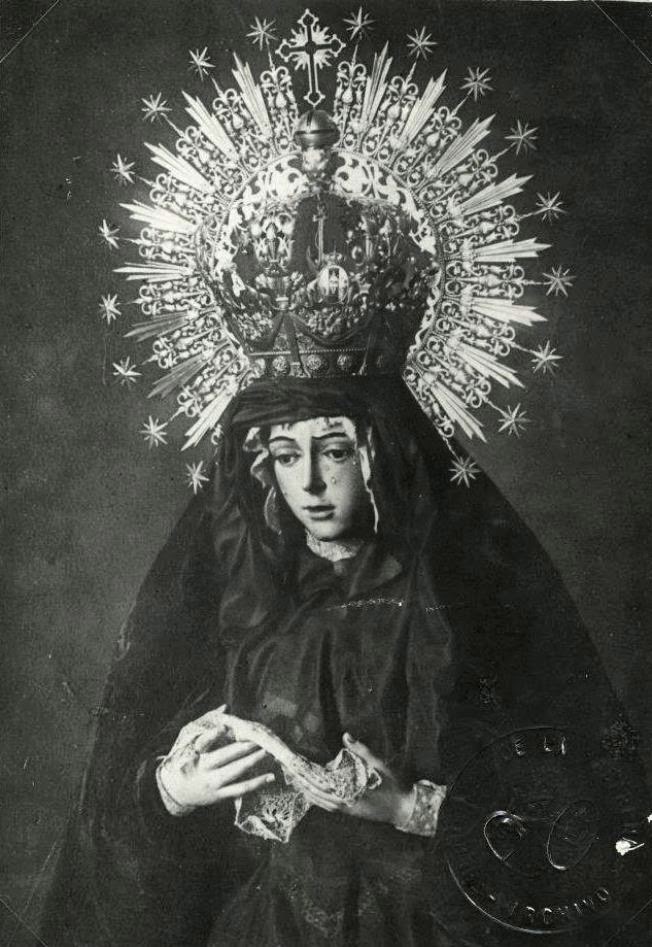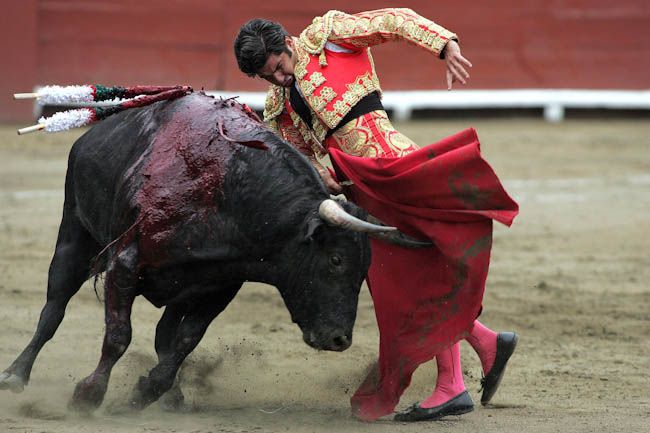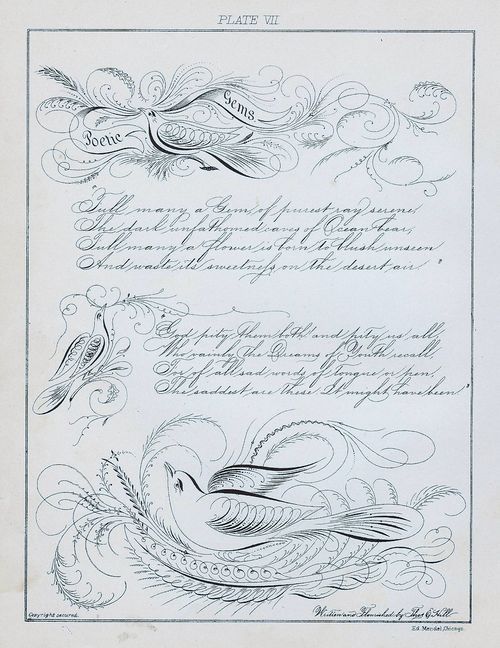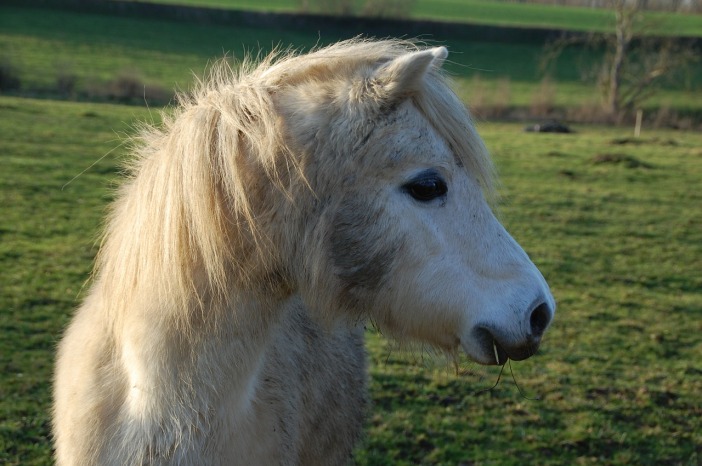In Part I I considered the pagan aspects of bullfighting. Now we move on the Virgin Mother goddesses…
There is a folkloric tradition binding bullfighters and the Virgin Mary, the different representations of whom, as I have argued before, are for all intents and purposes distinct goddesses, or at least distinct avatars of a generalized Mediterranean mother goddess. Up through the 1970s, the only form of social mobility for young men in Andalucía was to become a bullfighter, but it wasn’t easy to find a trainer or a patron. So the bravest or most desperate would-be bullfighters would sneak into the bull breeders’ fields at night to get some practice passing bulls with a cape. This was incredibly dangerous because Spanish bulls are very large and extremely aggressive, plus it was dark, and if the breeder’s ranch manager caught you, they would likely shoot you on the spot. Lots of guys were gored to bleed to death alone in the night somewhere. Not surprisingly, in such situations, you want to have a little supernatural protection. And so, at least according to legend, bullfighters tend to be especially fervent in their devotions to their Virgin.
And the feeling, we are told, is mutual. There’s at least one famous song about one of the Virgins mourning the death of her devotee, a young would-be bullfighter in the fields. The most common representation of the Virgin Mary in Spain, particularly in Andalucía, is la dolorosa (the sorrowful). This is Mary distraught over the death of her son Jesus, with tears on her face and frequently a heart pierced by daggers. This is the Virgin that people pray to for help. Yes, there are representations of Isis Mary holding Baby Horus Jesus, but these are usually located in small side chapels; the largest and most central representation of the Virgin is almost always a dolorosa. So, mourning is a defining feature of these goddesses’ mythology and of the relationship between them and their people.
I think what we are seeing in these separate goddesses who yet seem to be the same, is the meeting of locally-specific land- and community-based powers with more universal deity powers. I don’t fully understand how this works, but I think it’s a lot more representative of how old time paganism functioned than the highly abstract universal deities that seem to be popular with modern pagans. For whatever reason, grief seems to have become the nexus that enables people to connect to these deities, and has come to sort of encapsulate their nature.
But there’s mourning, and there’s mourning. This is how one of the most famous and popular Virgins is dressed as she mourns perpetually for her dead son Jesus:
She is standing here on the paso or float that will carry her around town on the night of Maundy Thursday/Good Friday. You know, the day Jesus was crucified. She looks pretty magnificent in spite of a few tears; there is about a ton of gold and silver here, and those five flowers on her bosom are made from enormous emeralds and diamonds.
But this is how she looked in 1920, when her most famous bullfighter devotee was gored to death by a bull:
Gone are the emeralds and diamonds (a gift from that bullfighter) and the golden mantle, replaced by widow’s weeds.
Wait, widow? Yeah, I said it. I realize that what I’m saying is…uh, non-canonical…to Catholics and other Christians and once again I have to reiterate, this is not something local people in Spain would ever say. This is my interpretation of what is really going on under the surface. Just as numerous scholars, pagans, and magicians have spotted the obvious parallels between representations of Mary and Baby Jesus and Isis and Baby Horus, I think the Virgin in southern Spain (Sevilla in particular) has picked up the dropped thread of an ancient goddess. The way the Virgin mourns for Jesus and her bullfighters looks a lot less like a mother grieving her son than it does like a woman grieving her lover (your mileage may vary, but that’s my take). Not that those two things are mutually exclusive–indeed, I think the Virgin’s mourning is multivalent, by which I mean that people connect with it through their own experiences of grief, whether those involve a lost parent, child, spouse, lover, or what have you. But the mother grieving for her son/lover was a major religious and mythic current in the pre-Christian Mediterranean, in the form of Cybele.
In light of this, I think it is interesting to look at a well-known story about two of Sevilla’s patron saints, Justa and Rufina. According to the story, they were sisters, from a family of potters, who lived during the 3rd century AD. At that time, Spain was the Roman province Hispania and Hispalis (Sevilla) was an important river port and center of trade. In the version I heard, celebrants carrying an image of Cybele/Magna Mater on a kind of litter or float, passed by Justa and Rufina’s family’s shop and demanded a sacrifice of pottery. Naturally, the Christian sisters refused. (The rest of the story is your standard martyr story–they were hauled in by the Roman authorities, tortured, and killed.)
Carrying religious effigies around on litters isn’t exactly unique to Spain–they did it in ancient Egypt, they do it in modern Japan–it’s something people just do. Other kinds of Christians do it in other parts of the world. But I guarantee nobody gets into it the way people do in Sevilla during Holy Week. Hours and hours of pounding drums, funeral dirges, incense wafting, candlelight, bloody penitents, strange robes and headdresses, people spontaneously bursting into ecstatic praise songs, throwing flowers–I mean, if that’s not a pagan ritual then I don’t know what is. And if it doesn’t alter your state of consciousness, nothing will. (Jesus is a part of this too, but I’ll get to him in the next post.)
So ok, it’s pagan, but why do I associate these goddesses with Cybele? Well, it might not be Cybele per se. Many cultures have called southern Spain home, or established colonies there, from the Phoenicians, to the Greeks, Romans, Celtic-speaking peoples, Visigoths, and Muslims from Africa, Arabia, and Persia. It was deliberately religiously pluralistic until the Reconquest and the exile of Jews and Muslims in 1492 (a banner year, that one). In Sevilla, you can still feel the undertow of different cultural currents. For example, the Virgin pictured above is Nuestra Señora de la Esperanza Macarena (Our Lady of Hope Macarena). Though I’ve heard different proposed etymologies for the name Macarena, the only one I’ve found remotely persuasive is that it derives from al-Makrin, the Arabic name of a gate in the Roman wall near this Virgin’s church, subsequently applied to the surrounding neighborhood. In Sevilla, it makes perfect sense that a nominally Christian Virgin, probably carved in the late 1600s, would take her name from the Arabic name for a Roman neighborhood. And as Gordon points out, such deeply layered cultural palimpsests are where magic is made.
My point is that there undoubtedly a lot of goddesses worshiped in that city through time, including numerous mother goddesses, and maybe even many grieving mother goddesses. It could be, for example, that in this region people more readily connected with the part of the Isian-Osirian myth where Isis mourns for the dead Osiris. Perhaps most likely it’s a syncretism involving aspects of all these goddesses. Those that are specific to Cybele and shared by the modern Virgins are (1) They are urban. Cybele was not exclusively urban, being associated with nature and wild animals, but she did have an explicitly urban connection at least in Greece. (2) A central element of their myth is mourning for a dead lover who dies and is resurrected and who, at least in some versions, is also the goddess’ son. In Cybele’s case, this lover is Attis, and he was also her priest. It is noteworthy that the goddess’ consort is never her equal. In Sevilla’s version of Catholicism, Jesus doesn’t receive anywhere near as much popular devotion as the Virgin. She is treated as a goddess, he is treated as something less than a god. (3) Springtime festivals. In Roman times, Magna Mater/Cybele had two festivals, Hilaria, a week-long celebration around the spring equinox; and Megalesia, also about a week, which began on April 4. And (4) from the 2nd-4th centuries AD, taurobolia–bull sacrifices–were offered to Magna Mater née Cybele. (I also have to say that I’m not the only person who has made the connection between the Virgins and pre-Christian mother goddesses, I’m just making it my way.)
“In the late republican era, Lucretius vividly describes the procession’s armed ‘war dancers’ in their three-plumed helmets, clashing their shields together, bronze on bronze, ‘delighted by blood’; yellow-robed, long-haired, perfumed Galli [priests] waving their knives, wild music of thrumming tympanons and shrill flutes. Along the route, rose petals are scattered, and clouds of incense arise. The goddess’s image, wearing the Mural Crown and seated within a sculpted, lion-drawn chariot, is carried high on a bier.” (quoth Wikipedia)
In Sevilla, Holy Week is the major religious festival and while its dates change every year, they are of course always in March or April. Holy Week is holy through its association with the death of Jesus and his resurrection on Easter Sunday. Easter begins the season of (what I interpret to be) ritual bull sacrifices. Two weeks after Easter comes the April Fair, another week-long festival, but this one dedicated to drinking, dancing, rich people showing off their horses, lots of bullfights, and general Bacchanalian revelry. Collectively, Holy Week and the April Fair are known as Fiestas de Primavera (spring festivals).
So while I don’t 100% commit to the idea that the Virgins are avatars of Cybele specifically, Cybele/Magna Mater’s cult does seem to at least be one strand in the skein–which is, appropriately, the symbol of Sevilla on the city flag. Given the Mother’s “Virgin’s” special patronage of bullfighters, might we consider the possibility that the bullfighter enacts the role of her priest and consort, and that the recipient of these sacrifices is in fact the Great Mother, who occasionally also requires the sacrifice of her priest? Again, I’m not making the argument that this is some secret 5,000-year-old religion that has persisted since the Bronze Age. Rather, I’m saying that the most resonant threads from religions both ancient and modern are continuously teased out and re-woven. But at the same time, because the local deities were never completely allowed to “die” or be forgotten, they continue to communicate with people and to teach their mythology. We can’t overlook their role in writing the story.
Have yourself a happy Halloween folks!











